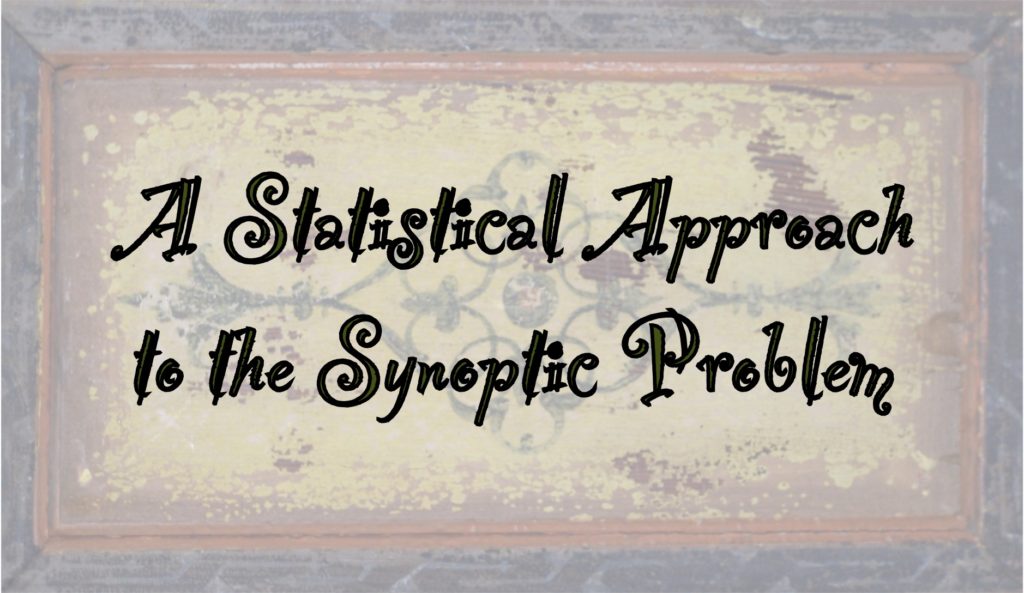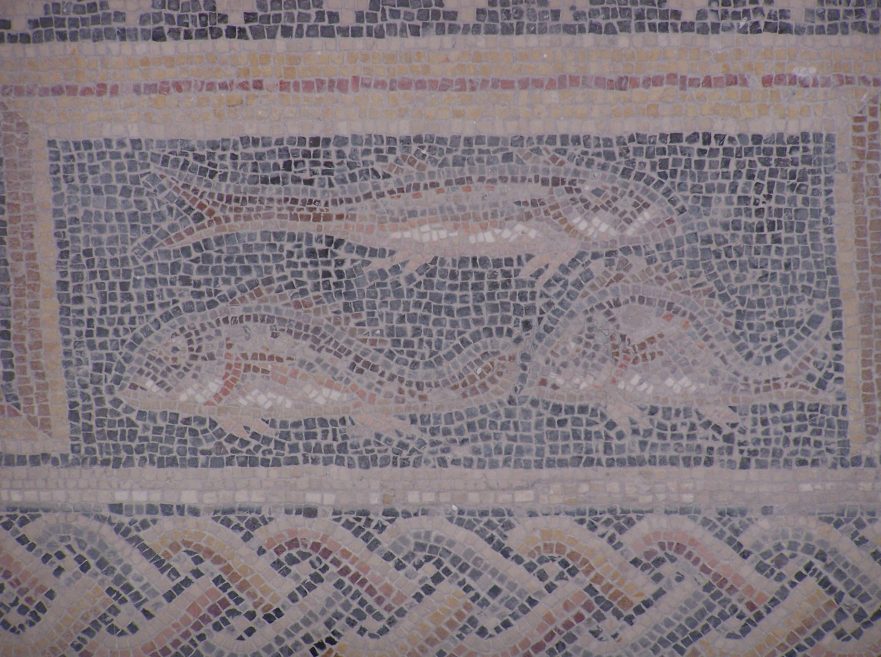
In the previous article of this series we examined the statistics of verbal identities involved in comparisons between materials shared by all three Synoptic Gospels.[1] These Triple Tradition (TT) statistics allowed us to eliminate four of the six options of simple linear dependence between the three Synoptic Gospels. Based on our analysis only two options of simple linear dependence are viable, namely:
and
Now we will bring into consideration the statistics of “Double Tradition” (DT). I use this general term to refer to all Synoptic Gospel material that is attested by two Gospels, but not found in the third Gospel. Since the amount of material shared exclusively by Matthew and Luke is so much greater than the material shared by the other two pairs, this material has received the most attention from scholars. The shared materials of Matthew and Luke have their own special designation as “Q,” from the German word Quelle which means “source.” The intended implication of the German term is that in addition to using the Gospel of Mark the authors of Matthew and Luke shared a source that was not available to Mark—based on the conjecture that if Mark had known this source he would have used it.[2]
Paid Content
Premium Members and Friends of JP must be logged in to access this content: Login
If you do not have a paid subscription, please consider registering as a Premium Member starting at $10/month (paid monthly) or only $5/month (paid annually): Register
One Time Purchase Rather Than Membership
Rather than purchasing a membership subscription, you may purchase access to this single page for $1.99 USD. To purchase access we strongly encourage users to first register for a free account with JP (Register), which will make the process of accessing your purchase much simpler. Once you have registered you may login and purchase access to this page at this link:
- [1] See Halvor Ronning, “A Statistical Approach to the Synoptic Problem: Part 1—Triple Tradition.” ↩
- [2] There is a certain danger in the name “Q” because this conjecture is all too easily treated as an established fact. It is too easily supposed that it were already proven that this material existed in some separate source document (or oral tradition) that was available to Matthew and Luke but not available to Mark. Whether or not “Q” did exist separately from the source of those materials which are common to all three Synoptic Gospels is, however, a matter of debate. See the long section on “Q” in Thomas R.W. Longstaff, The Synoptic Problem: A Bibliography 1716-1988, (Macon, Ga.: Mercer, 1988). For a recent discussion, see Raymond Martin, Studies in the Life and Ministry of the Historical Jesus (Lanham, Md.: University Press of America, 1995), Appendix 1, “Syntax Criticism of Q Material,” 73-83. Also debated is the question of its extent: whether “Q” contained only those materials found exclusively in Matthew and Luke, or whether it also contained some or all of the independent materials of Matthew and Luke (which are independent then only because the other of the two writers omitted that material for some reason), etc., etc. Or could “Q”even have contained most or all of the Gospel materials, so that each author was simply choosing those parts of it that served his purpose and omitting the rest? For extensive bibliography on each of these options, see Longstaff, The Synoptic Problem: A Bibliography. ↩

































































































